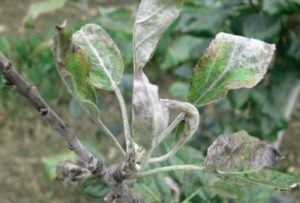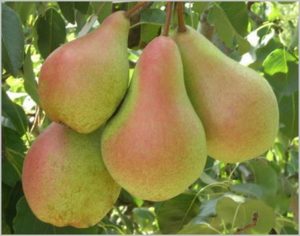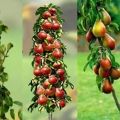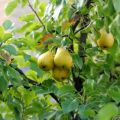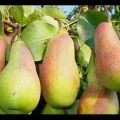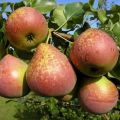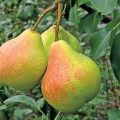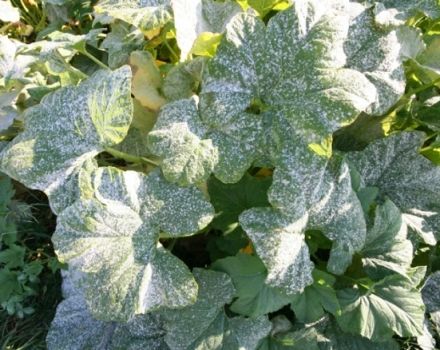Description and characteristics of pear varieties Abbot Vettel, planting, growing and care
The pear, known to many gardeners as Abbot Vettel, has large and oblong fruits. These fruits have a delicate sweet taste, they are juicy, but do not deteriorate for a long time and can, if properly stored, lie until the New Year. Pears ripen in early autumn, and are plucked half green from the branches. Fruits do not ripen in trees, but in cool rooms. This harvesting method was not chosen by chance - if the fruits ripen on the branches, their taste characteristics are reduced.
Description and characteristics of pear Abbot Vettel
The French variety of unusually fragrant pears has been cultivated for a long time in southern European countries. Now these fruits have spread in the orchards of Central Russia. Abbot Vettel is a sweet, juicy fruit that melts in your mouth.
It has a pleasant taste, subtle sour notes are felt. The pulp of the fruit is sweetish-spicy, oily, dense, creamy. The fruits are large and oblong, the weight of one fruit reaches 250 grams. The peel of a ripe pear is rough, has a yellow color, brown dots are visible on the surface. This dessert variety of pears is covered with a slight blush during ripening.
A mature tree reaches a height of 3 meters. Begins to bear fruit 4 years after planting. Abbot Vettel is a self-fertile variety. For a good harvest, there is no need to plant other varieties of pears nearby.
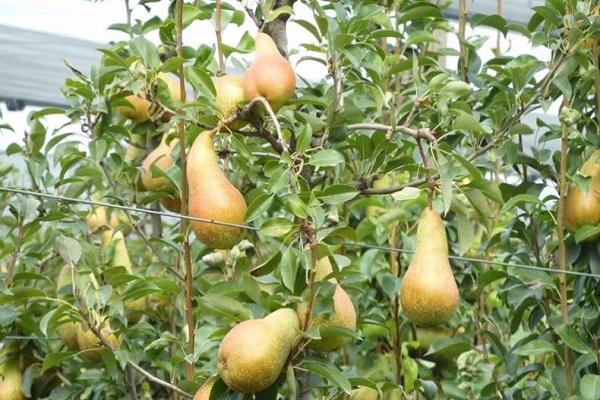
Advantages and disadvantages
Pros:
- self-fertility;
- marketable appearance;
- excellent taste characteristics;
- medium resistance to scab, rot, cancer.
Minuses:
- low frost resistance;
- average yield.
Landing features
Abbot Vettel loves black soil and fertile loam. Like all types of pears, she hates acidic soil. To normalize the acid-base balance, it is recommended to fertilize the soil with ash or lime. The pear can be grown on sandstone. First, the land must be fertilized with mullein, sod and black soil must be added.

Timing
Seedlings can be planted in autumn and spring. Many gardeners prefer autumn planting. The tree is planted when leaf fall ends. Before the onset of cold weather, a young seedling must have time to adapt to new conditions. In the spring, trees are planted before the buds awaken. Spring planting is preferable for the southern regions, autumn - for the Middle Strip.
Landing place
It is recommended that Abbot Vettel be planted in a bright place, away from tall trees and tall buildings. The pear does not like swampy soil.As it grows, its root system reaches 8 meters in length. The roots go deep into the ground, so areas with too high groundwater levels should be avoided.
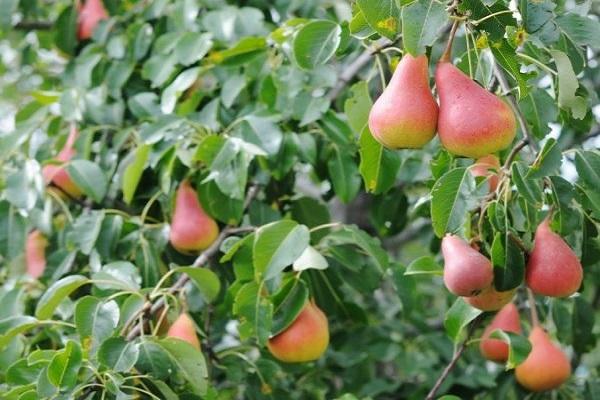
What is better to grow from?
Abbot Vettel is best grown from a seedling 1.5 meters high, which is one or two years old. It is advisable to buy young trees in nurseries, where you can always ask the seller for a certificate of quality. It is not recommended to buy seedlings of fruit trees at spontaneous markets. Sellers do not always provide reliable information about the product.
The pear can be propagated by cuttings or grafts. True, for this you need to cut a small twig from the mother tree. It is rooted in the ground or grafted into any other variety of pears. The tree propagates by layering. To do this, a young pear branch is bent low to the ground and sprinkled with soil. When the roots appear, the cut is cut from the mother tree.
Distances between trees
Abbot Vettel is only three meters high. It is advisable not to plant other plants near the pear that will shade it. The distance between adjacent seedlings is 4 or 5 meters. Between the rows - at least 5 or 6 meters.
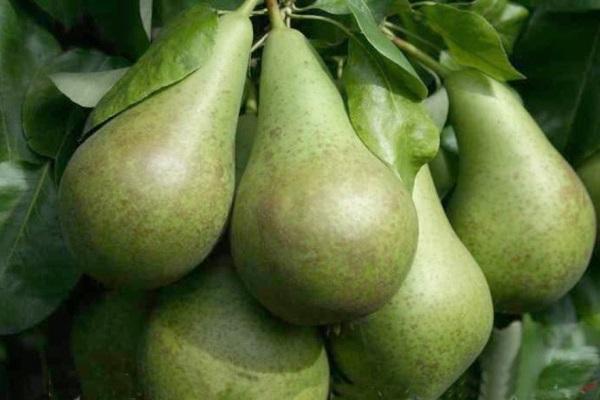
Landing technology
For planting, you need to dig a hole 70 centimeters deep. It is recommended to enrich the soil with compost (5 kilograms), superphosphate and potassium. Before planting, the roots of the seedling should be placed in water for 12 hours; a Heteroauxin tablet can be added to it. At the bottom of the hole, stones must be poured for drainage.
The seedling is inserted into the hole and covered with earth up to the root collar. Then 3 buckets of water are poured under the root. The land near the tree is tamped tightly. The pear is a very fragile plant. It is imperative to install a support near it.
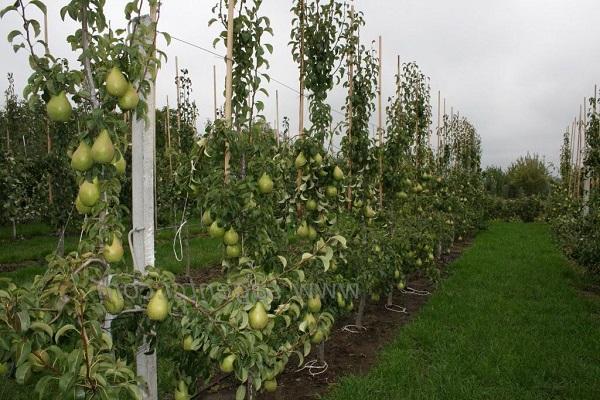
Tree care rules
This pear variety, with proper care, regular pruning and timely feeding, can yield up to 45 kilograms per tree. If you do not take care of the pear, its crown will become thick, and the fruits will become small and sour.
Watering mode
Abbot Vettel is watered in dry spring and summer. A young tree needs 3 waterings per week. One bucket of water is poured under the root. An adult pear is watered more often. In a dry spring, during flowering and the formation of ovaries, the tree is watered every other day. 2 or 3 buckets of water are poured into the soil. Watering can be combined with top dressing, weed harvesting and soil loosening.
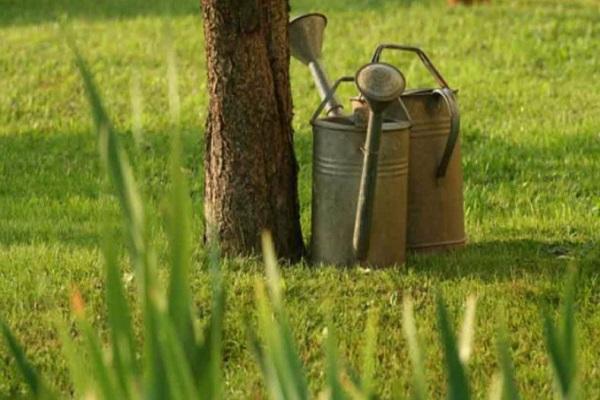
Top dressing
In the spring, Abbot Vettel is fertilized with a solution of chicken manure or mullein. They take 3 kilograms of organic matter for a bucket of water. The near-stem zone is mulched with humus. During the formation of ovaries, nitrogenous, phosphorus and potassium fertilizers are introduced into the soil. Pears are fed with Urea, Ammonium Sulfate, Ammonium nitrate.
In the fall, before wintering, powdered superphosphate, phosphorite flour, potassium sulfate are introduced into the soil. Organic and mineral fertilizers cannot be applied at the same time. There must be an interval between them - at least 14 days.
Wintering
In the first winter, a young tree is necessarily covered. The trunk is poured with dry mulch to a height of 30 centimeters. The tree is wrapped with dry straw, agrofibre, building heat insulator. Before wintering, the trunk must be painted with slaked lime. Whitewashing protects the pear from rodents and pests. Spruce branches can be laid around the tree. It has good thermal insulation properties and keeps the barrel away from mice.
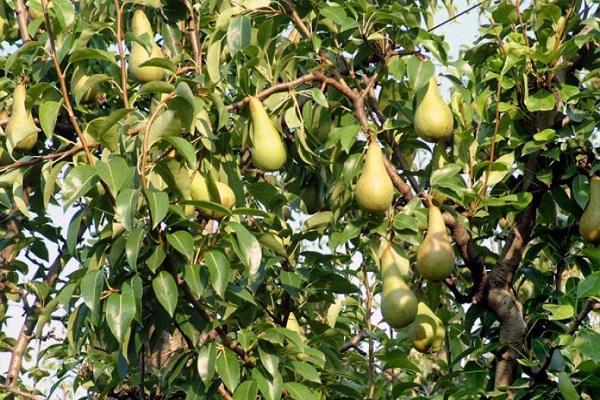
Rejuvenation
Abbot Vettel is a light-loving plant. Its crown must be periodically thinned out. Eliminating unnecessary branches, they form the skeleton of a tree that will withstand large fruits. Pruning is done in early spring, before the buds awaken. Branches are removed by shortening or thinning. If the tree grows strongly upward, the tops of the branches are shortened by a third.When thinning, the branches are completely removed. This procedure prevents the formation of too dense crown.
Old pears need rejuvenation. Mature trees are rejuvenated to increase yields and increase fruiting. Old branches are cut by a third every 3 years or cut off completely, leaving young and healthy ones. The central trunk must be removed - it is infertile. In the fall, before wintering, dry, rotten, broken branches are cut off.
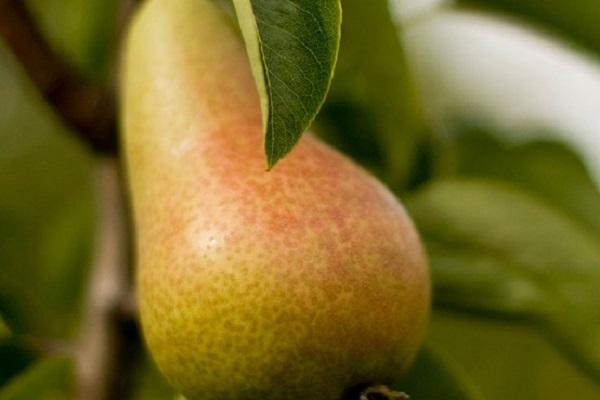
Diseases and pests
The fight against diseases and insects should be started in spring. It is recommended to treat the tree trunk with slaked lime. For the prevention of diseases in the summer, the crown is sprayed with fungicides, a solution of Bordeaux liquid or copper sulfate. During flowering and fruit formation, the pear is irrigated with insecticides to prevent the appearance of pests.
Diseases and treatments:
- Scab.
Brown spots appear on leaves and fruits. The fruits crack, stop ripening, become hard. Diseased fruits are removed from the tree. The rest are sprayed with Bordeaux mixture or fungicides (Skor).

- Moniliosis.
The fungus infects the fruit and causes it to rot. Sick pears are removed from the branches. The rest are irrigated with Bordeaux liquid or a weak solution of lime.
- Rust.
Leaves and fruits are attacked by a fungus that leaves orange round spots on them. Sick fruits pick. The tree is treated with Bordeaux mixture or Cuproxat.
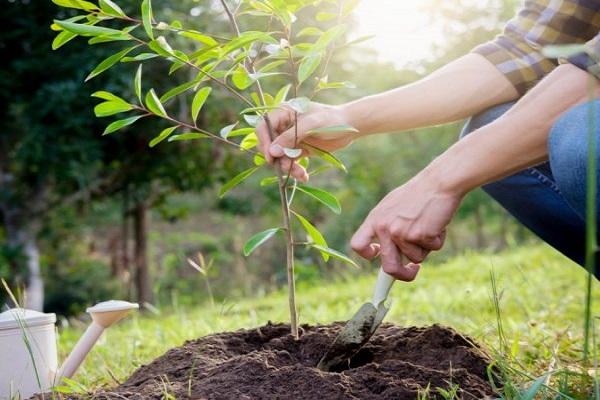
What regions is the variety more adapted to?
Abbot Vettel was originally grown only in southern countries. Now this variety began to be planted in the Central region of Russia, in Ukraine, in Belarus. The pear has adapted well to life in the Middle Latitudes. True, the tree needs to be insulated for the winter.
Having successfully wintered, the tree wakes up in the spring, bears fruit in summer and ripens in the first half of September. Fruits are picked from the tree unripe. Dense and healthy fruits are removed along with the stalk. It is advisable not to scratch or drop pears during harvesting, otherwise they will quickly deteriorate. Store fruits in a dark, dry, cool room at a temperature of 0 to 5 degrees Celsius.
